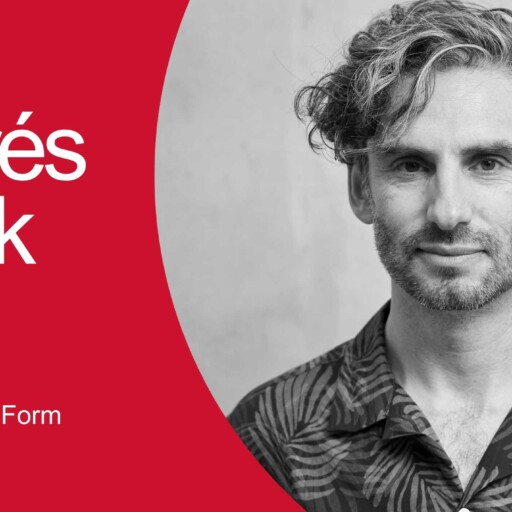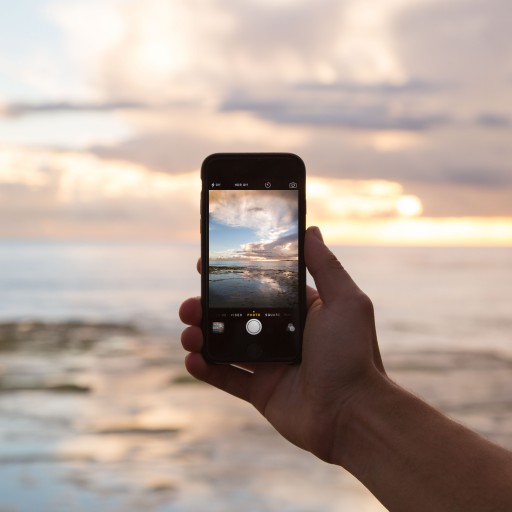Enorme Studio, Actiu, and IHP Group gave us some clues about trends in interior design in 2020 for domestic spaces, workplaces, and hospitality. Sustainability, both in terms of managing spaces and the production of materials, looks set to dominate the coming year.
Enorme Studio: Living big in small spaces
Rocío Pina and Carmelo Rodríguez, the duo behind Enorme Studio, believe that when it comes to the interior design of residential spaces, the main idea will be “how to live big in small spaces”, something which is more a necessity rather than a trend. We must be very sustainable and efficient with the space we have available, but without giving up the identity of the objects that reflect who we are. We can do so by adopting a more minimalist way of understanding life.
The domestic space is one of exploration and experimentation. Rocío gives the example of our kitchens, which are either looking more and more like laboratories or becoming the centre of the home in a combined kitchen/living area, making the home a welcoming space once again. We are paying more attention to the design of our homes because we have come back to them. We don’t just live in our home; we show it off. As Carmelo Rodríguez explains, we show it to our intimate circle of friends as a host, but now everyone else can see it on Instagram. The home has become more public, but also more closely related to our identity: your home is a representation of you.
https://www.instagram.com/p/B5rqYC2ovdp/?utm_source=ig_web_copy_link
Materials and different finishes that were only accessible to a certain group of people for a long time are now more widely available. “We are interested in better design and the most interesting materials are those that are accessible to all types of people,” says Carmelo Rodríguez. Rocío Pina points out the trend of exploring and preserving locally available elements and finishes in domestic spaces, taking on a world that tends to lean towards globalisation. This also includes greater concern for how materials are produced, and the efforts put into recycling and giving objects a new life.
Colour is being used in a less prejudiced and more experimental way, with different combinations and the use of intense polarities. A greater range of materials also means a greater range of colours. “You can come up with whatever you want to have,” Carmelo Rodríguez explains, and the fluorescent, pastel, patterned, and other options in the market are broadening our horizons.
https://www.instagram.com/p/BsbYxMWI4XU/?utm_source=ig_web_copy_link
Despite this wider range of material and colour options, we are heading towards more personalised furniture. This is another interesting trend linked to the accessibility of more exclusive designs, including second-hand pieces from big name designers that are available online, which give a special touch to a “regular” home.
The ideas of democratisation and appreciation of design are coming together. “It’s an interesting time for design right now of opening up to the wider public” and users of a space are becoming experts. For Carmelo Rodríguez, this means more dialogue and that “creating spaces is going to be more interesting because it’s going to be a more shared experience” with fewer obstacles.
For Enorme Studio, “the design world needs pioneering clients” more than trend-setting designers. When someone comes up with something new and the result is interesting, there is a domino effect. But pioneers are always needed to take the first step. For Enorme Studio, it is easier to do this by adopting the 1970s view of design that they like to use, which makes sure that the client enjoys the process.
https://www.instagram.com/p/Bw2XA59IRG9/?utm_source=ig_web_copy_link
Actiu: espacios de trabajo flexibles, sostenibles y saludables
Soledat Berbegal, consultant and director of brand reputation at Actiu, highlights three big trends: sustainability, taking care of our health, and flexible working, the latter of which consists of designing more flexible and collaborative workspaces. “The concern about our health is growing, which is closely linked to the WELL certification, and it will go from being an aspect that sets you apart to a must, which is what happened with sustainability,” she says.
These trends have a big influence on the choice of materials for a project. ensuring they come from recycled and recyclable sources is part of the commitment to sustainability. Actiu’s ergonomic chairs are recyclable and recycled materials are used in their manufacture. One example is the Wing chair, which is made from 100% reused plastic.
The world of workplaces is becoming more closely linked to those of contract work and hospitality, and it’s all about offering wellbeing through soft materials that remind us of home. It also means that they are able to absorb sound. “The attention paid to acoustics is considered essential in workplace design projects because most are open-plan. The privacy and concentration required [by employees] can be achieved using the furniture itself,” Soledat Berbegal explains. One example is Longo POD, which are small phono-absorbing dividers that can divide up the space and make it appropriate for different uses, thus avoiding the use of walls, in line with the concept of flexible spaces.
flexibles.
https://www.instagram.com/p/B0GE6AyCpsW/?utm_source=ig_web_copy_link
When it comes to this trend of providing wellbeing and warmth, wood is a must. But where it comes from, its manufacturing process, and the way it is going to be used or reused must always be considered. Its durability provides sustainability, as it is a material that stands the test of time.
The presence of colour is a growing trend in office design because it provides a bit of extra motivation to those that use the space. “For a time, offices were all grey and white, but now we need to turn offices into homes,” says Berbegal. In everyday workspaces, neutral surroundings with a touch of colour are the norm, while in more collaborative and social spaces, such as meeting rooms and rest areas, colour is used more playfully.
The need for functional furniture is perhaps most important in the interior design of offices, but above all, “good design must serve the people,” says Soledat, and contribute to making them better professionals. That’s where the ‘cool working‘ methodology of Actiu comes in, which is based on the balance of aesthetics (cool) and functionality (working), in addition to getting to know the team better in order to transfer this to a design that serves the specific needs and objectives of each company and its employees. Designing start-ups, which have a collaborative working culture, is not the same as designing a law firm, which requires more opportunities for privacy and concentration. Actiu has also joined in on the trend of furniture personalisation by producing armchairs and tables with made-to-order finishes and dimensions.
https://www.instagram.com/p/B0gc1OfiIgf/?utm_source=ig_web_copy_link
Some stand-outs among their references include their own collaborators, like Stone-Designs, who are experts in making offices feel like home, and Alegre Design Industrial with their work in ergonomics. There is also the famous Patricia Urquiola, who has incorporated elements of home design into workplace design for Haworth.
IHP Group: hotels are feeling more like home
Carla Gómes, interior designer for International Hospitality Projects (IHP), believes that the area of hospitality is experiencing an increase in hotel projects for tourism, which is where investor interest currently lies. In hotel interior design, the idea is to make them feel like home, just like in the world of office design. “The client’s comfort and making them feel at home will continue to be a priority, with a move away from impersonal hotels,” she says, something which is achieved with details that make us feel comfortable, while simultaneously keeping to a minimalist style.
This area is also seeing an increase in the use of sustainable and recycled materials. It’s not just that designers are becoming more interested in these types of materials, but that the clients themselves are also demanding their use. Carla Gómes provides the following example: “If we choose a plastic piece of furniture, they ask us if it is recycled polypropylene made from bottles collected from the ocean to ensure that it won’t harm the environment”. Even though it’s early days and there are many products that still need to be developed, it’s a growing trend. In fact, some regulations already exist, meaning that a certain percentage of a project must be carried out using this type of materials.
https://www.instagram.com/p/B5pJNyPAW3s/?igshid=zzeznf5tya07
Hotel design continues to be dominated by the use of neutral colours that mean the project stands the test of time. “We work by adding an element with colour, like decorative objects, textiles, or a wall to give it a bit of punch, but the prevailing tones are neutral, in a way that allows us to change it without changing everything,” Carla explains. We must remember that intense colours go out of style faster, which is why more pastels are used. Warm colours also help add to the homey feeling.
Furniture is being designed specifically for each project more and more, as it provides a level of exclusivity. But unique pieces from big design firms are also being included to give the project some character, such as lighting fixtures or the seats in the lobby.
When Carla Gómes approaches a project, she does so by thinking about the need to balance functionality and aesthetics: “We can’t create something pretty that doesn’t work or that is expensive to maintain”. And sometimes, inspiration comes from a design from the past, despite the fact that we live in a technological age.
Some designers at the forefront of these trends include Philippe Stark, Patricia Urquiola, and the Chinese studio Shanghai Hip-pop Architectural Decoration Design.
https://www.instagram.com/p/B6sqLS8jDLk/?utm_source=ig_web_copy_link




